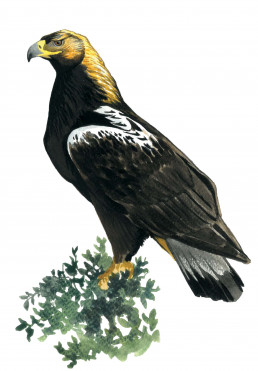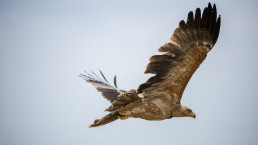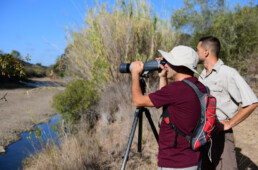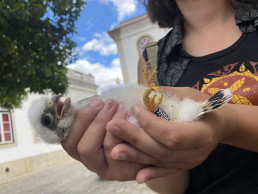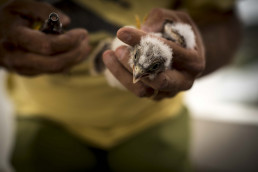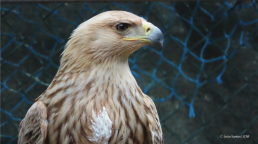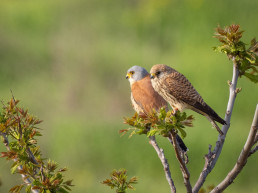The Sapnish Imperial Eagle (Aquila adalberti) is an endemic species of Iberia, occurring both in Portugal and Spain. Due to the exclusive territory that occupies, it is considered “Vulnerable” on the IUCN Red List. In the south of Portugal, the population has been increasing thanks to the efforts of conservation programmes implemented by the LPN and ICNF over recent years.
With a wingspan that varies between 180 and 210 cm, it is heavy but elegant in flight. In the Portugal Wildscapes territory they scour the skies in search of food and it is common, in a single day, to see more than two or three individuals of different ages and plumage.
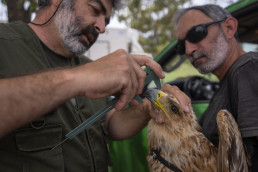
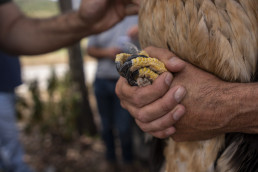
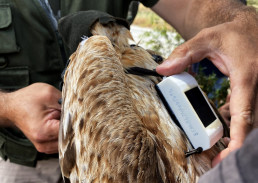
In order to contribute to the study of the species, Portugal Wildscapes, through the Conservation Fund, funded 3 GPS transmitters, with the appropriate size and weight for this bird, which are placed on their back.
This initiative, in partnership with ICNF – Parque Natural do Vale do Guadiana, aims to evaluate the dispersion movements of the species and thus contribute to the study of the Spanish Imperial Eagle community. Which locations of the peninsula are most visited by these species? Where will they breed? The datalogger also allows the monitoring team to identify premature deaths, by poisoning for example, and act in time to prevent other incidences.
The ICNF – Guadiana Valley Natural Park identifies the birds that can be tagged. So far, two GPS transmitters have been installed, on birds that were found in the Baixo Alentejo territory, in a weak or injured condition. Normally for this species, the eagles are sent to the Lisbon Recovery Centre for Wild Animals – LXCras, a structure belonging to Lisbon City Council, where they recover and are then returned to nature, back in this territory.
Watch the incredible flight of the Spanish Imperial Eagle as it is returned to the wild after recovering from 14 flares.
Where are the Spanish Imperial Eagles?
Regularly, ICNF sends us the positions of the released Iberian Imperial Eagles with a GPS transmitter. In Portugal Wildscapes only stayed a short time – the first to be released, left and returned by the same air “highway” several times… the second, in less than 3 days left for Spain and is exploring the central Spanish countryside – without ever returning.
Will they return to Portugal in the spring to look for a female?
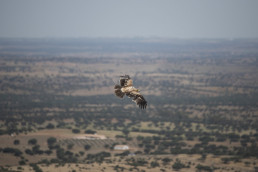
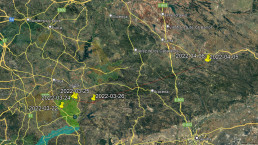
Position of Alcaria, the first Spanish Imperial Eagle to be released with a GPS transmitter. In the first movements, it flew around the border area, and went in a straight line, without hesitation, to a point southwest of Zafra.
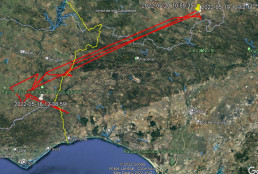
In this picture you can see how Alcaria returned to Portugal and, a few days later, changed its mind and went back to Spain. Curiously, it always “followed” the same aerial path.
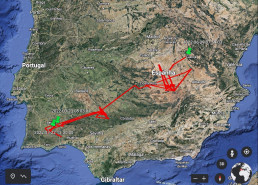
After coming and going a few times, Alcaria decided to visit Ciudad Real and Cuenca. Where will it be heading now?
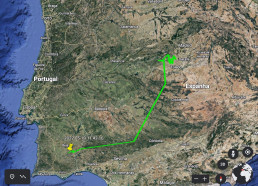
The second Spanish Imperial Eagle released went, without hesitation, straight east and then up north, near to Sierra de Gredos.
Would you like to watch Spanish Imperial Eagle on your next trip to the south?
Contact us, take a look on our birding tours, or if you prefer travelling on your own, discover our Birding Trail!
